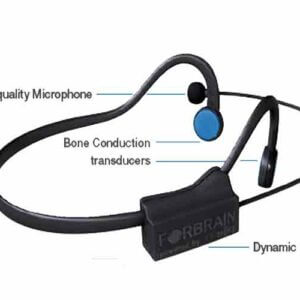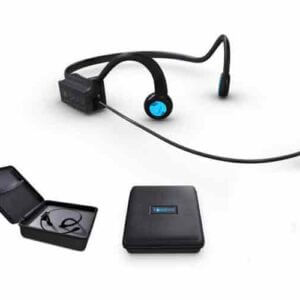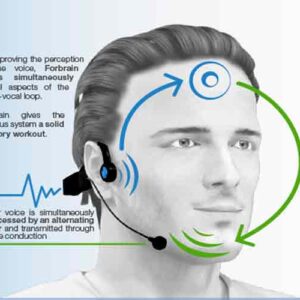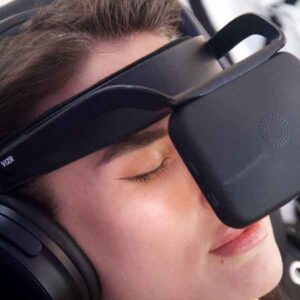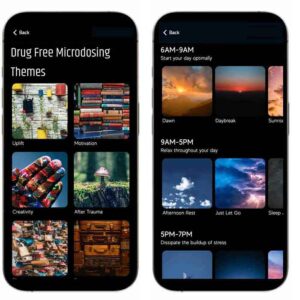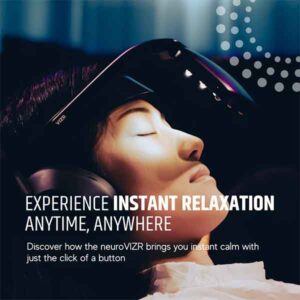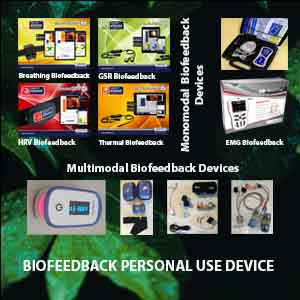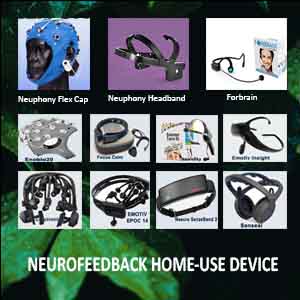NEUROFEEDBACK TRAINING FOR PEAK PERFORMANCE
In all aspects of our life, to have optimal performance, it is necessary to have good concentration, attention, memory – the ability to keep the mind focused, clear, and sharp, the flexibility of the mind – ramping up to peak performance at the key moments but then relaxing again afterward, not getting trapped in a state of over-arousal, creativity, the ability to achieve inner calm in the face of stressors – stress management skills. Today, neurofeedback training for peak performance is one of the most effective tools that provide all these features necessary for our successful lives and high achievements in various spheres of activity – sports, education, professional activity, business, etc.
Table of Contents
Toggle- NEUROFEEDBACK TRAINING FOR PEAK PERFORMANCE
- From Good to Great: How Neurofeedback Trains Healthy Brains to Dominate
- WHY OLYMPIC MEDALISTS, NASA, NAVY SEALS, AND PROFESSIONAL ATHLETES USE PEAK PERFORMANCE TRAINING
- NEUROFEEDBACK IN HIGH ACADEMIC PERFORMANCE
- NEUROFEEDBACK IN PEAK PROFESSIONAL PERFORMANCE
- NEUROFEEDBACK HOME USE DEVICE
- Understanding the Differences Between Medical and Non-Medical Neurofeedback
- Non-Medical Applications: A Path to Personal Development
- When Neurofeedback Becomes Medical
- The Overlap in Device Functionality
- Neurofeedback and Neuroplasticity: How It Works
- Conclusion: A Tool for Peak Performance
- Explore More: Case Studies and Effective Neurofeedback Devices
- Forbrain
- Mendi NIRS Neurofeedback Headband
- Neuro VIZR for Mental Clarity and Focus
Neurofeedback training/therapy can do more than help people cope with various conditions. They also enhance performance, where creativity and mental processing are essential. It allows athletes, musicians, artists, schoolchildren, and students in their academic performance and diverse business professionals. Many examples of individuals and groups using EEG neurofeedback and biofeedback to enhance their performance in the business world and competitive athletic fields.
Optimal performance includes many components: intellect, cognitive abilities, sense of emotional harmony, prevailing attitude, and personal motivation. Amazingly, we can enhance our performance regardless of our starting point. Neurofeedback is appropriate for anyone at any age.
Neurofeedback helps individuals reach their full potential by optimizing brain function. In fact, this system enhances brain performance, making it suitable for various purposes and individuals. If you are struggling with certain issues, it could mean that your brain isn’t functioning at its peak efficiency. As a result, brain training can help improve stress management, sharpen focus, and increase reaction times. Moreover, many artists, athletes, and executives have already boosted their performance by incorporating Neurofeedback into their routines.
From Good to Great: How Neurofeedback Trains Healthy Brains to Dominate
Athletes and other sportsmen
- Enhance athletic potential,
- Improve mental balance,
- Improve concentration,
- Improve brain/body harmony,
- Increase reaction speed,
- Perform better while under pressure.
Schoolchildren and students at any level of academics can benefit from:
- Perform Multi-task better;
- Improved abilities to study;
- Improve attention;
- Replenish creativity;
- Fortify memory while at the workplace or in the classroom;
- Absorb more of what is learned;
- Better prepare for significant exams;
- Calm test-taking or academic exam anxiety
Elite business or performing professionals in any profession who want to:
- Maximize their high-level skills (for example, musicians improve their musical memory, sharpen focus, and enhance intuitive engagement with music for overall optimum performance skills);
- Perform Multi-task better;
- Improve relative weaknesses to “polish” their abilities;
- Quite a “busy” mind;
- Be more resilient;
- Better function at their peak;
- Pursue a competitive edge
Adults of all ages who want to:
- Increase their energy,
- Sharpen their focus,
- Improve their memory,
- Maximize their health quotient,
- Improve their memory,
- Balance their nervous system,
- Improve their heart and lung function,
- Improve their health as they age
Biofeedback and neurofeedback have been successfully used by people of all ages, executive and managerial-level business personnel, physicians, surgeons, pilots, airport control tower personnel, musicians, dancers, military personnel, and elite athletes such as golfers, baseball players, football players, marksmen, speed skaters, volleyball players, soccer, track and field, gymnasts, etc.
WHY OLYMPIC MEDALISTS, NASA, NAVY SEALS, AND PROFESSIONAL ATHLETES USE PEAK PERFORMANCE TRAINING
Neurofeedback training for peak performance allows athletes to gain a competitive edge on the sports field without spending more hours practicing. By identifying areas of the brain pertinent to performance enhancement and improving their functioning, behaviors can be altered; athletic deficits, areas of weakness, and even extraneous distractions can be eliminated from the game. “Different sports place different demands on the brain.” Training/treatment is effective in many different sports.
In addition to alleviating psychological symptoms (e.g., anxiety, depression) and sports-related injuries (e.g., concussions, migraines, muscle tension) that can interfere with sports performance, Neurofeedback training can improve various areas necessary for peak performance: Relaxation, Focus, Agility, and Timing, as well as maintaining and enhancing Motivation (Wilson, Peper, & Moss, 2006).
Neurofeedback for Enhanced Sports Performance
Many sports teams worldwide are beginning to turn to neurofeedback to become more successful on the playing field. In 2006, the Italian soccer team received neurofeedback training, and when they won the World Cup, they attributed their win to that training (Wilson et al., 2006). The Canadian free ski team and Canadian speed skating men’s team also used neurofeedback to reach peak performance levels in the 2010 Winter Olympics (Starkman, 2009), while the Vancouver Canucks turned to the same training in their race for the Stanley Cup in 2011.
In 2008, after securing funding two years earlier, the Canadian freestyle skiing team signed up for the bio/neurofeedback training program to become the top medal winners in 2010. Specifically, the program helps athletes develop the necessary mental and physical skills to perform at their best. As a result, the team believes the training is paying off. Additionally, the program has two main components: neurofeedback, which tracks how the brain reacts, and biofeedback, which measures how the body responds.
The Impact of Bio/Neurofeedback in Elite Sports
Electrodes and sensors are connected to five physiological modalities—muscle activity, skin conductance, respiration, body temperature, and heart rhythm—and different neurological spots on the head, depending on whether the focus is on performance or recovery. Brightly colored charts on the computer screen display the athletes’ real-time responses, allowing them to learn which brainwaves are ideal for recovery and peak performance. Through this process, athletes gain a deeper understanding of breathing and focusing techniques, helping them better control their responses. Moreover, they become more aware of where they hold tension in their bodies and learn how to relax effectively. Most athletes completed over 15 sessions, totaling more than 30 hours, in preparation for the Olympics.
In addition to the successful Italian soccer team and Canadian skiers and hockey players, the Canadian speed skating men’s team, the tennis champion Mary Pierce, and Olympic gold medalist skier Hermann Maier have spoken to support neurofeedback training. Neurofeedback is also extensively used in elite sports by professional golfers, Olympic athletes, and football clubs such as AC Milan, Real Madrid, and Chelsea. AC Milan football club has been using neurofeedback training since 2006, and based on their World Cup win, Real Madrid adopted it. Chelsea began using it in 2009.
Neurofeedback training for peak performance is used by
- The Pro golf circuit
- Formula 1 teams
- NASA Astronaut Training Center
- United States Olympic Training Center
- English Institute of Sport (Olympic Training Center)
- Canadian National Olympic Sports Centers
- Norwegian Olympic Training Center
- Taiwanese Olympic Team
- Singapore Olympic Sports Council
- US Special Forces and Navy Seals training
- United States Army’s Centers for Enhanced Performance
- Wingate Institute of Sports & Physical Education, Israel
- Human Performance Institute, Australian Special Forces
- West Point Military Academy
- many others…
The “Articles” page of this website, which will be constantly updated, has articles regarding neurofeedback use in different sports.
Video – Neurofeedback & Biofeedback for Peak Performance in Sports
NEUROFEEDBACK IN HIGH ACADEMIC PERFORMANCE
Neurofeedback for Mental Focus and Emotional Balance
Focus and emotional balance are the keys to peak performance in all areas. Neurofeedback trains the brain to function more efficiently, improving mental functioning and emotional stability and enhancing concentration and mental focus.
Much like physical training, brainwave training is used to strengthen specific brainwave patterns. The more you practice activating a particular area, the stronger and more capable that area becomes. The brain is like any other organ in the body. If you exercise it, it performs better. An efficient brain can accomplish more, with greater accuracy, in less time.
Neurofeedback provides high performers with the tools to train and exercise neural nets, such as how muscles are built. This personalized program strengthens specific neural connections, optimizing brain function like a harmonious orchestra. Restoring this natural symphony is what neurofeedback achieves.
Neurofeedback and Academic Performance
One of the significant reasons for academic underperformance in school children and students is problems with attention and concentration. Academic stress plays an essential role in determining their mental health. Academic stress involves mental distress regarding anticipated academic challenges or failure or even an awareness of the possibility of academic failure. During the academic years, academic stressors may show in any aspect of the child’s environment: home, school, neighborhood, or friendship. School-related situations – such as tests, grades, studying, and self-imposed need to succeed, as well as that induced by others – are the primary sources of stress for high school students.
While innovative teaching methods and remedial teaching can change academic performance, the fundamental problem of attention and concentration must be addressed. Neurofeedback is a device that indicates desirable changes in the Electroencephalogram (EEG) on the computer screen in a manner that the participant can easily comprehend. Training the neural activities in children using neurofeedback is effective in both clinical and non-clinical cases.
Every parent wants to see their child succeed in school and university. For a child to be set up for academic success in the future, positive skills and habits must be built from a young age, which relies heavily upon the optimal functioning of the brain. Neurofeedback is perfect for young children and students as it is an easy and effective method of training the brain to function optimally without using medications. Training a child’s brain to function at its best from a young age will help set them up for long-term success.
Key Brain Functions Enhanced by Neurofeedback
The three main areas of brain function that are positively impacted by neurofeedback include the following:
Working Memory. For a person to correctly complete a task, they must be able to hold information in their brain and apply it when appropriately needed. For example, suppose a child is taking an English exam. In that case, the child must be able to recall information from the passages provided on the exam to answer the questions about the readings correctly. Working memory will, in turn, affect overall academic performance. Neurofeedback strengthens the brain in areas that control working memory so the child can recall information stored in the brain more quickly and consequently increase their self-esteem.
Cognitive Flexibility. In school, students are made to think about various subjects in multiple ways. Building associations between concepts or relating different information together depends heavily on flexible thinking. For example, a child must utilize various thinking strategies to answer specific math questions. Being able to think flexibly is critical to academic success. If the brain functions optimally due to neurofeedback, this thinking becomes more accessible to students and will positively impact performance.
Behavioral Control
Sitting in a classroom for long hours daily can significantly challenge students. The distractions and temptations to stop paying attention and concentrating in school could negatively impact how well a student absorbs information daily and how well they perform on exams. Additionally, a child can be disruptive to the class by exhibiting behaviors such as yelling out answers without being called upon or talking out of turn. Neurofeedback works to calm the brain in addition to helping it function at its highest ability. The brain can then regulate emotional reactions, preventing the child from acting impulsively. The child can then focus attention and concentrate in the classroom for extended periods, speak in turn, and follow the rules more efficiently, allowing the child to learn and perform well on academic exams.
Neurofeedback Devices for Peak Performance and Learning
Today, many neurofeedback devices have been developed and tested in neurofeedback training for peak performance. All neurofeedback systems involve electrodes being attached to the scalp. However, there are variations in the volume and location of electrodes required and the feedback format. A simple system may require the person being monitored to relax, thus generating more alpha waves, and if they succeed, a bar representing the amplitude of one brainwave may increase and another one decrease – or the graphics could be more calming, so if they maintain alpha as the dominant brainwave they may make an onscreen flower blossom. If successful, the person may hear a tone, see it represented visually, and score a point. Medical and research systems often have more electrodes emphasizing location, although the feedback tends to be restricted to more simplistic visual and audio representations.
Video – NFB for optimal academic performance
The page “Home use devices” of this website provides more detailed information regarding different home-use headset neurofeedback devices that improve attention and focus on optimizing a learner’s engagement and achievement. Cognitive skills combined with emotional interest and active engagement produce effective learners who achieve at higher levels.
NEUROFEEDBACK IN PEAK PROFESSIONAL PERFORMANCE
Outstanding performers in all fields use neurofeedback technologies to reach their peak performance. Surgeons use it to improve concentration; corporate executives use it to increase emotional intelligence for improved leadership skills and better time management; others use it as a mental guide to reach mindful, meditative, or other spiritual states. Many people use neurofeedback brain training to release stress, improve sleep, and be at their best no matter what circumstances they face.
For attorneys, business leaders, and the financial community, greater efficiency means less mental energy is wasted keeping composure, second-guessing, over-analyzing, and maintaining emotional control.
Many high performers have issues related to long-term stress and use neurofeedback simply to promote stress recovery and improve sleep quality, which are both essential elements to long-term brain performance, endurance, and resilience.
Executives are frequently exposed to high levels of stress and pressure because they need to perform daily. Their reality resembles that of elite athletes, but there is a difference. Executives need to perform every day and have no time to rehearse. They operate in a rational/cerebral mode rather than an emotional/physical mode.
Performance optimization can be defined as the following: helping executives enhance their ability to focus and achieve a complete day of work while remaining highly energetic to continue with their evening activities.
Who can benefit from neurofeedback for peak performance in business?
- The iron man/woman whom nothing seems to bother, who maintains a resistance stage most of his or her life. These individuals can handle anything life throws at them yet often think there could still be room for being more balanced and fulfilled (human resources and superiors usually refer to them).
- The high achiever starts to feel that he or she needs to do something to stop his or her ‘‘busy brain’’ or deal with the fact that he or she has become increasingly impatient.
- The executive who begins to feel burnt out but wants to find a scientific yet natural way to help himself or herself rather than use prescription drugs.
- The individual hoped to build self-awareness to become more focused and work more effectively with colleagues.
Video – Neurofeedback for peak performance in business
Peak Performance Neurofeedback Protocol
The Peak Performance Neurofeedback (NFB) Protocol optimizes cognitive function and improves performance in high-stakes environments. This method has been widely applied in various fields, including finance, sports, and business. According to Steven D. Cochran, who conducted a neurofeedback training program for sixteen partners at a financial services firm, the results were impressive. A post-training survey revealed significant improvements among executives in several areas. Participants reported enhanced focus, reduced impulsiveness, less anxious thinking, better sleep, and increased productivity.
The Benefits of Neurofeedback in High-Pressure Situations
Neurofeedback enhances the ability to enter a flow state, helping individuals tune out distractions and channel their energy into the task. By refining brain function, neurofeedback boosts poise under pressure, speeds up recovery from mistakes, and reduces overthinking in critical moments. Motivation, concentration, and emotional control are key factors that separate top performers. This is why neurofeedback has become a standard in Olympic and professional sports training and is gaining traction in business.
Through neurofeedback, you can silence negative inner dialogue, broaden your perspective, and allow your natural personality to shine. Improved brain communication fosters focus and emotional balance, increasing productivity, creativity, and personal growth. Many individuals who undergo neurofeedback training report feeling more in tune with their true selves and experiencing improvements in multiple areas of life, including artistic, creative, and emotional well-being. Engaging in neurofeedback allows your brain to optimize your performance naturally, supporting overall mental health and helping you reach your full potential.
References:
Wilson, V., Peper, E., & Moss, D. (2006). “The Mind Room: in Italian Soccer Training: The Use of Biofeedback and Neurofeedback for Optimum Performance”: Biofeedback, 34 (3), 79-81.
Starkman, R. (2009). Athletes Wired for Success. Retrieved on September 19, 2011
Steven D. Cochran, (2011). Corporate Peak Performance Project: Biofeedback, Volume 39, Issue 3, pp. 123–126. DOI: 10.5298/1081-5937-39.3.09
NEUROFEEDBACK HOME USE DEVICE
Understanding the Differences Between Medical and Non-Medical Neurofeedback
Neurofeedback devices are used for both medical and non-medical purposes. However, the distinction between the two is often subtle and lies primarily in how the device is used and marketed. Non-medical neurofeedback focuses on personal enhancement, improving aspects like relaxation, focus, attention, and self-awareness. Users often apply these devices without professional intervention, integrating them into practices such as meditation, counseling, or even to achieve altered states of consciousness. In contrast, medical neurofeedback addresses specific medical conditions, such as anxiety, ADHD, or PTSD, and should involve professional guidance.
Non-Medical Applications: A Path to Personal Development
In its non-medical form, neurofeedback serves as a powerful tool for self-improvement. By helping users optimize brain function, these devices can enhance mental clarity, sharpen concentration, and improve emotional regulation. Whether using neurofeedback for educational purposes, recreation, or entertainment, the core goal is enhancing your brain’s natural capacity to learn and adapt. For example, athletes may use neurofeedback to reach peak performance, while business leaders might apply it to improve focus and decision-making under stress. These personal applications do not fall under medical treatment, yet the benefits they provide can be profound.
When Neurofeedback Becomes Medical
On the other hand, if a neurofeedback device is used with the direct intent of alleviating medical symptoms—such as reducing anxiety or managing ADHD—it is then considered a medical application. The same device that improves focus for general self-improvement could also be used in a clinical setting to treat a child with ADHD, making the distinction between medical and non-medical dependent on intent and usage. In such cases, professional oversight is recommended to ensure the safety and effectiveness of the treatment.
The Overlap in Device Functionality
Interestingly, most neurofeedback systems offer similar features, whether used in a medical or non-medical context. These devices measure brain activity, provide feedback, and encourage users to self-regulate brainwave patterns. However, the labeling, claims, and user expectations differ. Neurofeedback is an educational tool for non-medical users, but it’s part of a treatment protocol for medical users. This overlap underscores the importance of understanding the intent behind using neurofeedback devices at home.
Neurofeedback and Neuroplasticity: How It Works
Neurofeedback taps into the brain’s natural ability to adapt and rewire itself, a phenomenon known as neuroplasticity. Every time we learn a new skill, the brain forms connections between neurons, strengthening the pathways that facilitate the task. Neurofeedback accelerates this learning process by reinforcing healthy brainwave patterns. The device provides real-time feedback when the brain exhibits desirable activity, promoting continuous improvement through practice. Over time, users can improve their mental performance, whether for education, sports, or personal growth.
Conclusion: A Tool for Peak Performance
For those seeking peak performance—whether in education, sports, business, or personal growth—neurofeedback home-use devices provide an accessible and effective solution. By distinguishing between medical and non-medical applications, users can make informed choices about integrating neurofeedback into their lives. While the lines between these categories may blur, the potential for personal development through neurofeedback remains clear.
Explore More: Case Studies and Effective Neurofeedback Devices
For those interested in diving deeper into neurofeedback, we invite you to explore our website’s “Articles” page, where we share detailed case studies, practical insights, and explanations of how neurofeedback has been successfully applied across various fields. Whether you’re curious about how neurofeedback enhances performance in business, education, or sports, you’ll find plenty of examples and expert analyses.
Additionally, if you’re ready to take the next step and incorporate neurofeedback into your life, visit our website’s “Shop” page to discover the most effective neurofeedback devices available for peak performance. Our carefully curated selection includes devices designed to help you unlock your brain’s full potential, catering to both beginners and experienced users.
























